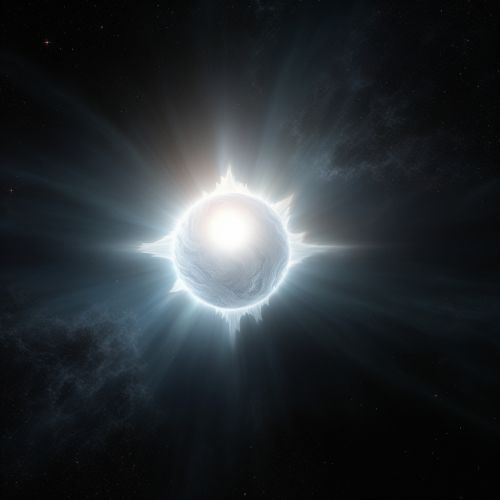White Dwarf
Introduction
A white dwarf, also known as a degenerate dwarf, is a stellar remnant composed mostly of electron-degenerate matter. They are very dense; a white dwarf's mass is comparable to that of the Sun, while its volume is comparable to that of the Earth. A white dwarf's faint luminosity comes from the emission of stored thermal energy.


Formation
White dwarfs are the final evolutionary state of all stars whose mass is not high enough to become a neutron star—over 97% of the stars in the Milky Way. They are formed by the condensation of the progenitor star's core at the end of the red giant phase, before the star enters the asymptotic giant branch.
Structure
White dwarfs consist of a dense core made primarily of carbon and oxygen, surrounded by a thin layer of helium, and an even thinner layer of hydrogen. The core is supported against gravitational collapse by electron degeneracy pressure.
Cooling and fate
White dwarfs are very hot when they are formed, but because they have no source of energy production, they will gradually radiate away their energy and cool over billions of years. This cooling process is slow at first because the white dwarf has a high heat capacity, but it speeds up once the star has cooled sufficiently that the heat capacity drops.
Observational properties
White dwarfs are often found in binary systems, as the result of mass transfer in binary evolution. They are also found as members of high-velocity pairs, which are thought to result from the disruption of binary systems by galactic bulge stars.
